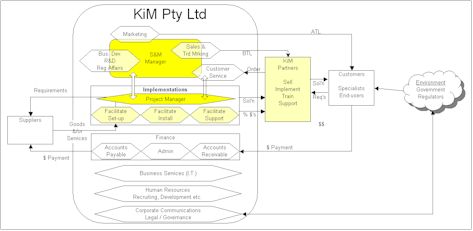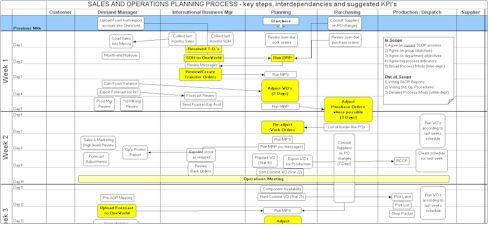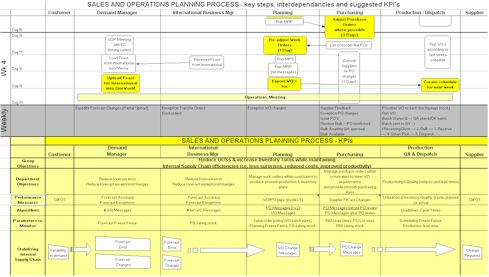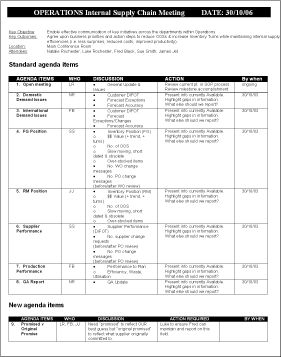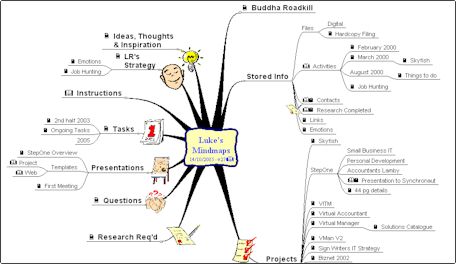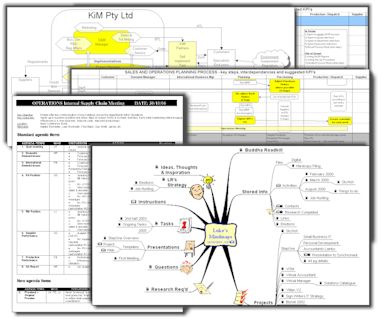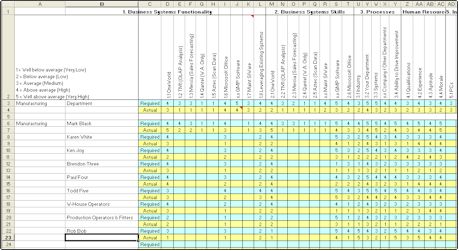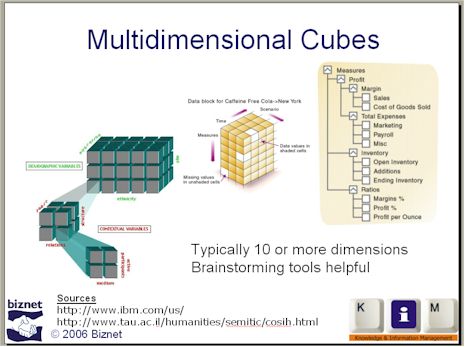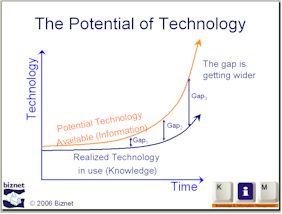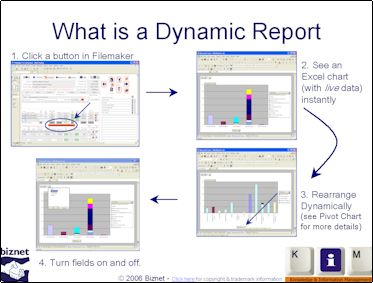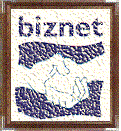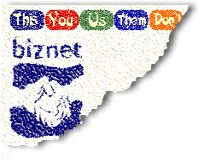 |
|
Introducing the Biznet approach developed by Luke Rochester
Luke Rochester owns Biznet and has a B.Eng. (honors), Grad Dip (Psychology), University Prize (Business Communication) and was a co-founder of a Dot Com that raised over $4m US before the crash (in 1999). He has been interviewed about the future of the Internet (type "Luke Rochester" into www.google.com or click here) and won an award for the accuracy of his revenue projections after Australia's largest product recall.
If you've just seen one of Luke's seminars please feel free to contact him to get references.
Luke specializes in helping business owners implement processes and systems which empower the staff and let the owner step away from the day-to-day operations. This frees the owner up to focus on strategy and ideas (or to spend more time with the kids). Luke uses the Biznet network of people and solutions to achieve this as follows:
- Understanding your business as it is today
- Understand how you want your business to look in the future
- Work out how to get from A to B (without you being there)
Sound simple? Scratch the surface of any one of these steps and you face untold challenges and a paradox at every turn. Read on for just a brief outline of what's involved and why Luke's background in Engineering, Psychology and Computers is vital to help you see it through.
| STAGE ONE: Understanding your business as it is today | |
| In this first stage Luke uses Business Process Mapping to help the owner view the company "from above". The owner then identifies "hot spots" and key areas in the business. |
|
| More detailed process flow diagrams focus on key areas of the business and show interdependencies between people, departments, customers and suppliers. The staff are asked to detail their key tasks and how they fit into the process flow model. Key interdependencies (both internal and external) are identified. |
|
| These process flow charts are then translated into KPI's (Key Performance Indicators) and algorithms are developed to measure performance in each key area. The same algorithms can often be used to model various scenarios in the future. |
|
| Staff are then asked to develop their own personal KPI measures. Managers help staff fit their individual KPI's in with the overall KPI's based on company goals and strategies. Finally an agenda is developed for weekly meetings where staff provide feedback to managers on how they are progressing with their individual KPI's. The manager's role becomes that of a troubleshooter and facilitator, helping staff achieve their individual targets so that the whole department achieves it's target and ultimately the company takes one step closer to realizing it's vision. |
|
| STAGE TWO: Understand how you want your business to look in the future | |
| While managers and staff are working on KPI's based on the current objectives Luke works with the business owner (and possibly other key players). Using some of the tools from stage one and other brainstorming techniques Luke helps the owner turn his ideas and vision for the company into a plan that the staff can execute. This is done by breaking the owner's vision into Mission Statements, Strategies, Objectives, Tactical Operations, Projects and finally Tasks. |
|
| The tasks are then the building blocks to create business process maps of the way the company should look at certain points in the future (1 year, 5 years, 10 years). Other dimensions may also be introduced at this point to help the owner build a more substantial model of what the future will look like for the company. With these dimensions in place Luke can help the owner create future projections of the company, which may include revenue projections, staffing requirements (including skills & facilities) and even resource requirements (equipment, material, systems). With the view of the company firmly in place the owner is ready for stage three. |
|
| STAGE THREE: Work out how to get there (without you being there) | |
| In essence stage one identifies "where you are", stage two articulates "where you want to be" and therefore it follows that stage three is all about working out how you will get there. If stage one and two have been done correctly then the foundations are well and truly laid for stage three which involves a "continuous improvement" approach to identifying gaps via an Awareness, Learning and Action feedback loop. |
|
| In an effort to bridge the gap between where you are and where to want to be you will want to use Luke's experience at turning your ideas and strategies into dimensions in the gap analysis. These gaps then feed into an implementation timeline (containing gap filler tasks). |
|
| The implementation timeline focuses heavily on the detail to achieve the objectives set in the short-term goals identified in stage two. Medium to long-term goals only require a high-level plan and the process is designed to continually review the longer term plans as the owner sees the short-term plans come to fruition. This way a process of continuous improvement firms up the overall vision and strategies for the company each time a review takes place. |
|
| The approach outlined above helps the owner to turn ideas into action but in a delegated fashion. Depending on the size and nature of the company an ever changing strategy can be more damaging than a frozen one however with the right tools in place managers are able to see the impact of executing a new strategy immediately by simulating it before unleashing it on the staff. Therefore the owner can engage the managers as sounding boards for new ideas before changing strategies. | |
| Tools and techniques picked up along the way | |
| Having worked on these types of projects for over 15 years Luke not only has a fundamental understanding of the steps involved he also has a toolkit of solutions that can accelerate the process. Along the way he has built an entire Business Management system to help small to medium companies operate in this fashion on a day-to-day basis. For larger companies he has developed OLAP based models (integrated with ERP systems) in the areas of revenue projection, sales forecasts and supply chain management. |
|
If you would like to find out more about the topics covered in this three stage consulting approach you can either contact Luke directly about a specific area of interest or you can request further information on the areas below:
- OLAP - Making it accessible and affordable for small to medium sized businesses
- OLAP - Advanced implementations for large corporations
- Filemaker: Complete end-to-end solutions built to your exact specifications
- The Future Bubble - What will our grandchildren make of all this?
- The future of the Internet - Luke was interviewed by web developers journal (a part of internet.com)
- The Gap - A look at why the gap between technology and users is getting exponentially bigger
- Biznet: Business on the Internet - Luke started out running an IT Business, now he consults to them
- Knowledge & Information Management - Commercial applications that are Industry specific
- Biznet in the 90's - the old Biznet website is still helping people that are new to web development
Luke
Rochester
B.Engineering (Honours), Grad Dip (Psychology)
- University Prize predominantly for his work on a Business Communication Package
- Co-founder of a Dot Com that raised over $4m US (responsible for product development & concepts)
- Established Biznet in 1996, an IT consulting business that survived the Dot Com crash
- Interviewed by Internet.com on the future of the Internet (type "Luke Rochester" into www.google.com for the interview)
- NPO Involvement (Luke does volunteer work for non-profit organizations - contact Luke for more information)
| The
Gap
The Gap between "what is possible with IT" and "what we are achieving with IT" is getting wider at an exponential rate. Companies are often happy to throw more technology at the gap … it’s exciting. Ironically this can often drive the gap wider. To close the gap there
needs to be a balance between: |
|
| OLAP
You can read a great explanation of OLAP here. Typically used for creating tables, graphs, dashboards and all sorts of reports it has not really taken off for general users. However, a clever use of Filemaker™ and Excel™ does provide you with dynamic tables and graphs linked to live data. However for large data sets this solution is often inadequate. Due to the exponential nature of data combinations the files can become extremely large and tend to have huge clusters of zeros. Clever OLAP tools can avoid these zero clusters (via feeder algorithms) thereby processing data much faster. Luke has built OLAP models holding up to 16 dimensions and an array of complex feeder algorithms. |
|
